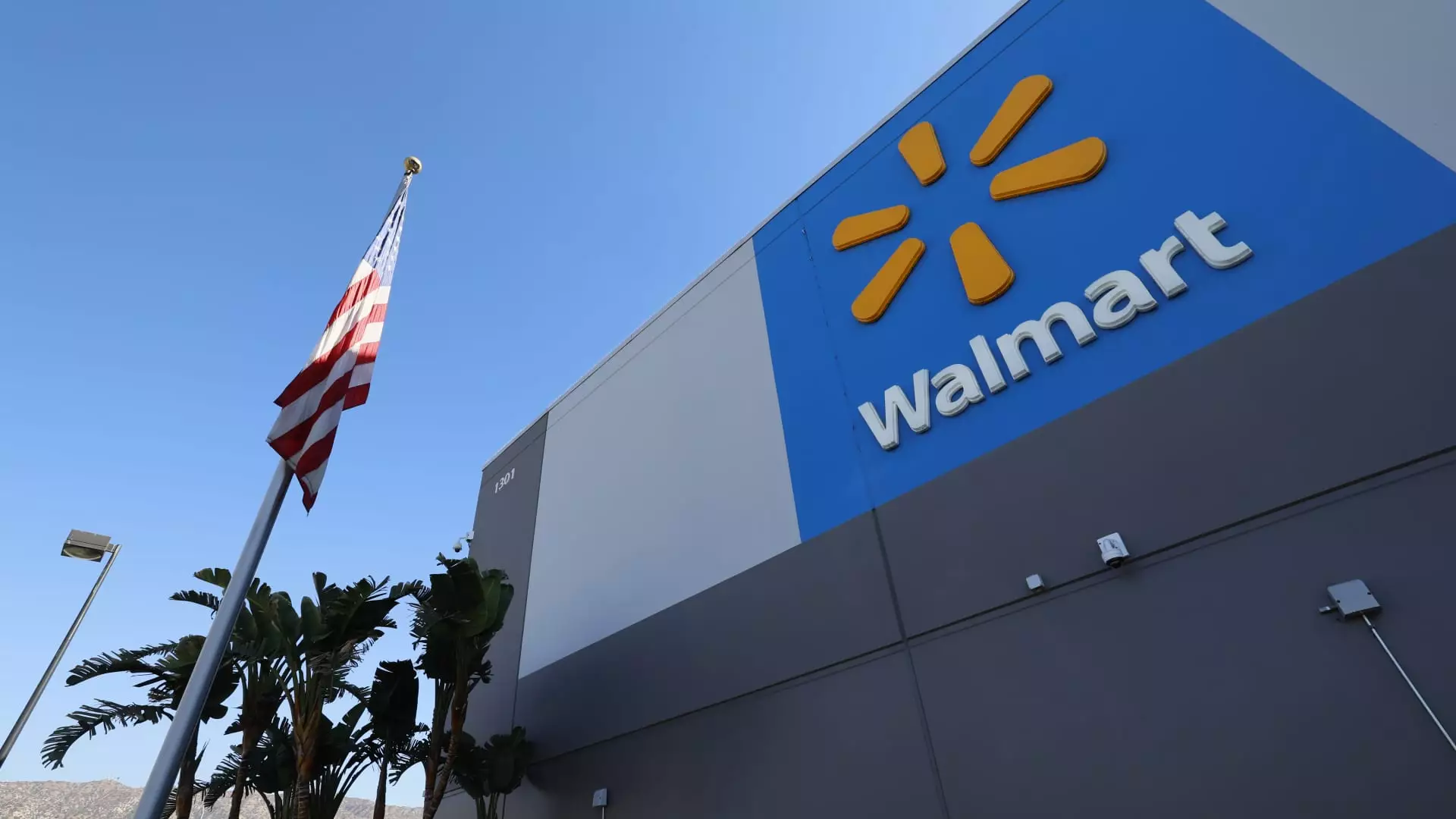Walmart’s latest decision to retract its first-quarter operating income outlook underscores significant vulnerabilities that emerge when large corporations are faced with the unpredictability of trade wars. With the implementation of drastic tariffs — like a staggering 104% on imports from China — the retailer is confronting a tumultuous economic landscape that threatens to erode profit margins and reshape consumer behavior. Such measures, driven by political ambitions, leave even the most dominant players in retail struggling to forecast growth accurately.
The retail behemoth remains firmly dependent on imports, specifically from regions like China and Mexico, making it particularly susceptible to changes in trade policy. In this context, the inability to provide a solid financial forecast for the quarter speaks volumes about the overall uncertainty surrounding major corporate strategies. This chaotic environment not only disrupts operational predictability but also sends ripples through the stock market, leaving investors and stakeholders anxious about the company’s immediate future.
Consumer Sentiments and Volatile Sales Trends
Walmart’s Chief Financial Officer, John David Rainey, astutely pointed out that consumer sentiment has taken a hit, leading to fluctuating sales trends. This observation is crucial; consumer psychology plays an essential role in retail performance. As inflation persists, buyers are increasingly steering towards lower-margin necessities over discretionary items, favoring discount goods that contribute less to overall profitability.
The effect of these changing consumer habits becomes more pronounced when examining categories outside grocery, where margins are stricter. While necessities like food continue to draw traffic, segments like apparel are faltering due to higher price sensitivity. Increasingly, consumers are not merely looking for the best price; they are making calculated decisions based on whether they feel their money is well spent — a variable that may struggle to be influenced by corporate incentives.
The Tariff Dilemma: Political Volatility and Corporate Reality
With tariffs serving as a double-edged sword, Walmart is caught at the intersection of governmental policy and market dynamics. The reality is that the political landscape — marked by fluctuating relations with numerous countries — is contributing to an unpredictability that can no longer be ignored. As President Trump pursues aggressive trade strategies, major companies like Walmart are being forced to adopt a defensive stance.
Rainey’s acknowledgment of ongoing uncertainty showcases the broader issue: companies cannot thrive under conditions of instability. A delicate balance must be sought, one that allows Walmart to preserve its price competitiveness while simultaneously responding to shifts in global trade relations. It begs the question: will the tariffs promoted by the government accommodate job growth at home, or simply push companies to become overly cautious, straining investments and operations?
Long-Term Strategies vs. Short-Term Risks
CEO Doug McMillon has placed an emphasis on the importance of long-term focus during these turbulent times, hinting at a strategy aimed towards market resilience. While this approach offers optimism, it raises concerns about whether short-term revenue losses will lead to long-term gains— a gamble that not all investors are ready to make.
Walmart’s servant-oriented marketing, championed by its leaders, is commendable. However, the significant background issues surrounding insurance costs, merchandise mix, and consumer psychology cannot be overlooked. In pushing through economic uncertainty, it’s vital for Walmart to clearly communicate its value proposition to both consumers and investors alike, despite the increasing constraints imposed by tariff-related policies.
The Balancing Act of Corporate Growth in a Tariff-Laden Environment
Amidst cautious investor sentiment, Walmart’s decision to uphold its full-year sales projections reflects an iron will to navigate through adversity. Yet, the elephant in the room remains the struggle to adjust business models in real-time without it negatively impacting the bottom line. If Walmart is to emerge stronger on the other side of this tumultuous period, it must expertly navigate the storm by increasing operational flexibility — a true test of corporate agility in the face of daunting shifts.
It seems increasingly clear that Walmart may find itself engaging in a balancing act between maintaining its reputation for lower prices and navigating the realities imposed by tariffs. This balancing act will not only reflect on the company’s financials but will also resonate through the socio-economic landscape, affecting consumers reliant on Walmart’s value.
As the company wades deeper into this uncertainty, the hope remains that one of America’s most recognized retailers will not only weather the storm but will also emerge as an industry leader, adept at pivoting in tandem with the rapidly changing world around it.

